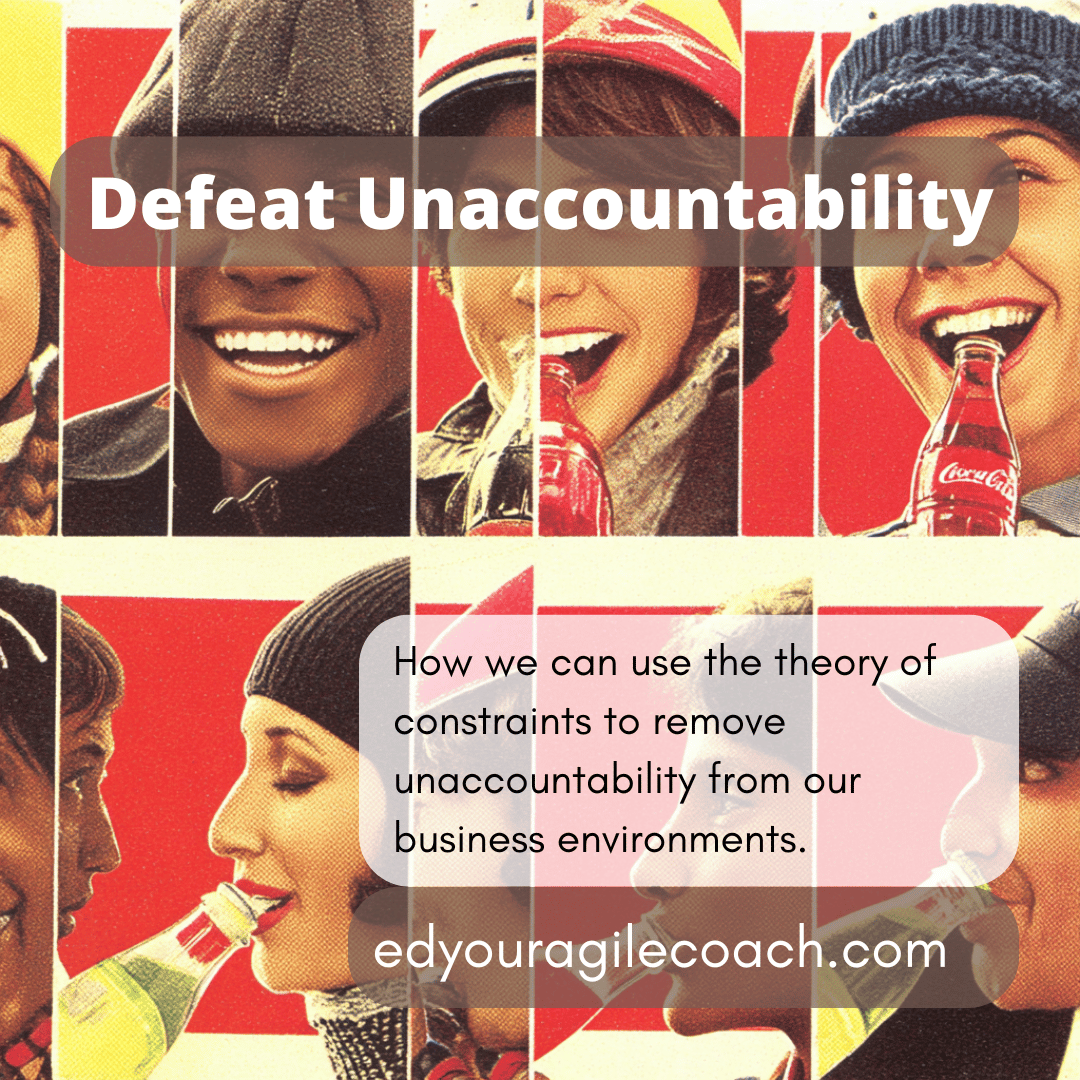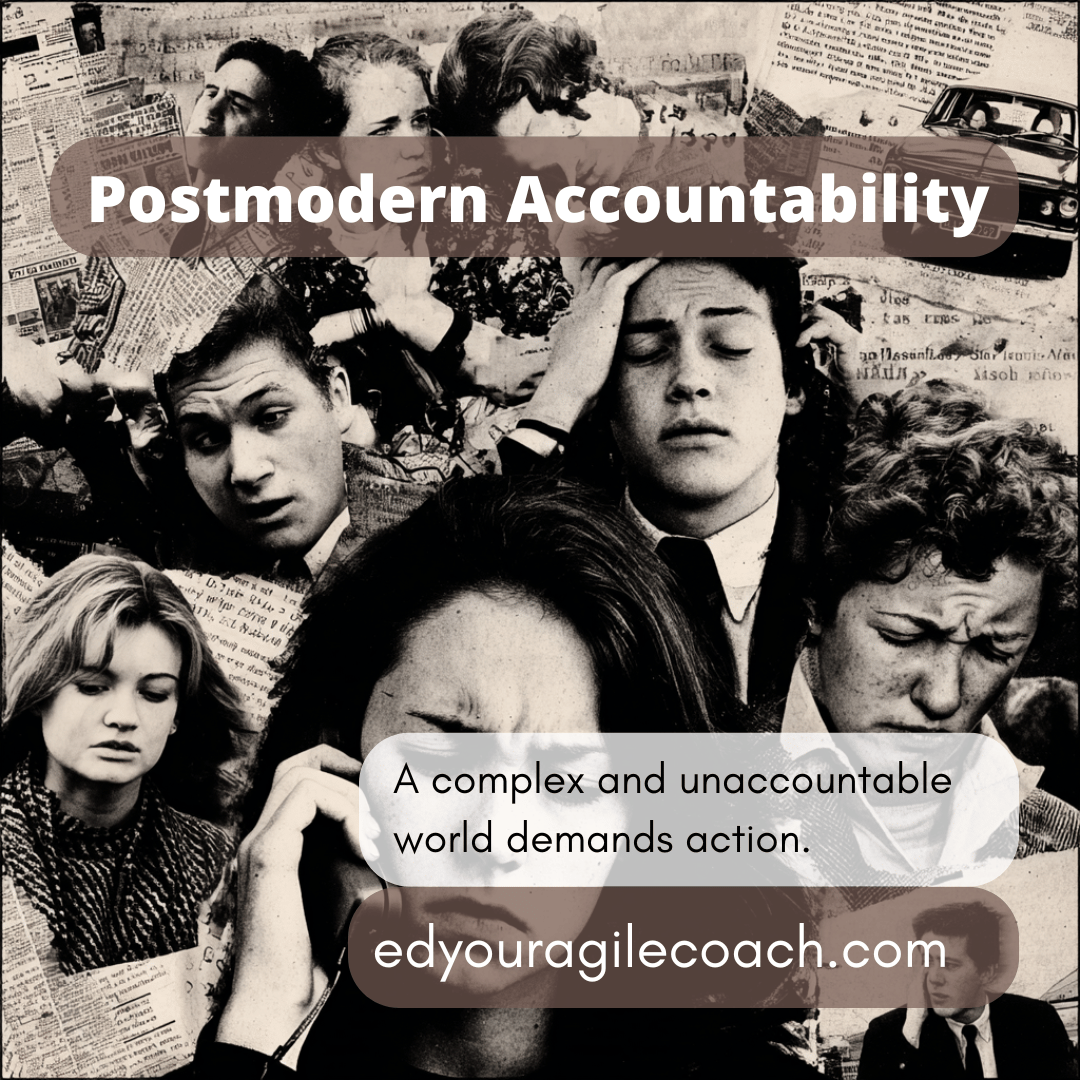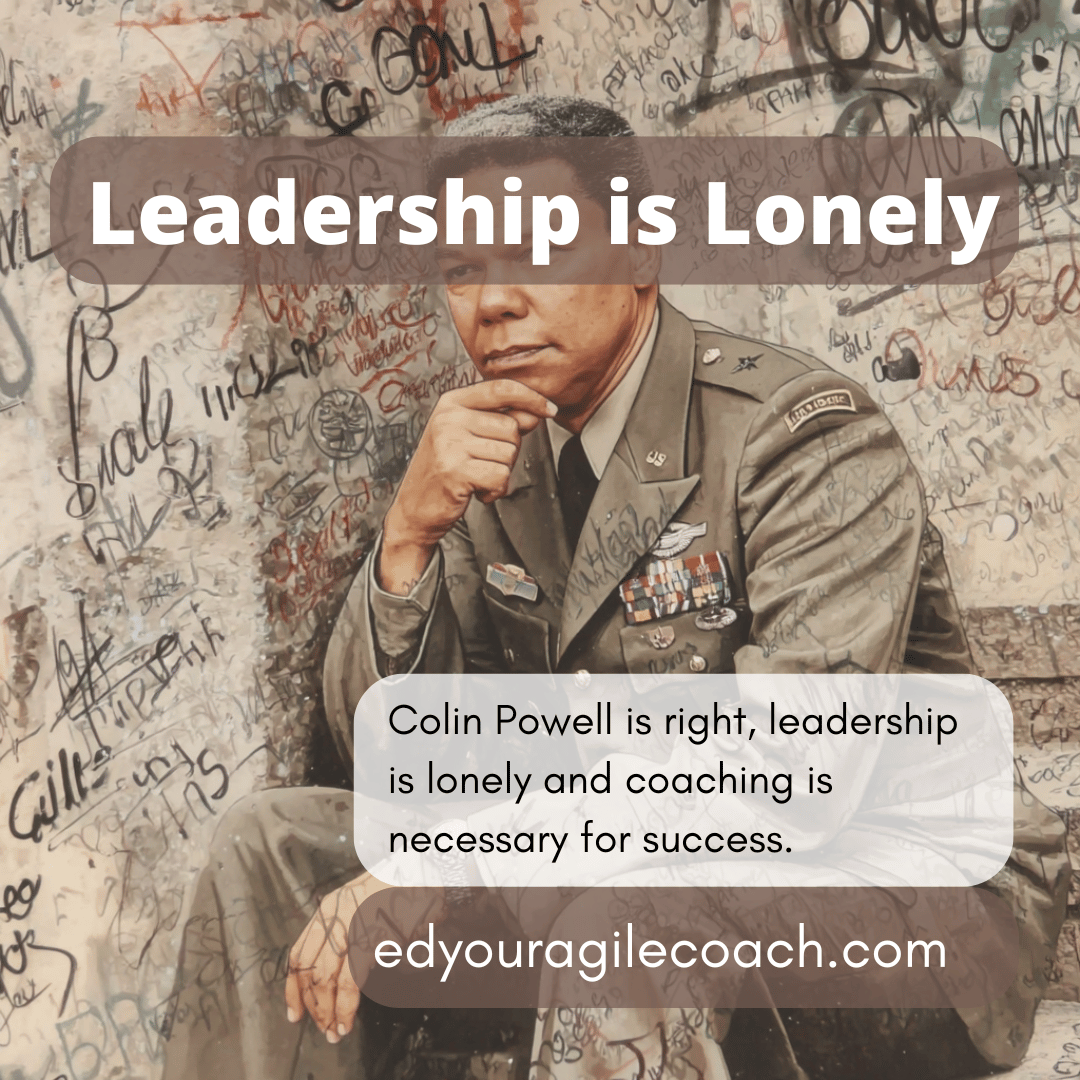Defeating the Unaccountability Machine

You stumble on a book or piece of media that changes your life. Steven Spielberg says the Westerns of John Ford inspired him to become a film director, while columnists like Mike Royko and John Klass inspired me to pursue a career in journalism. Unfortunately, the world of print media began its long decline when I graduated from college. I pivoted to a different passion, focusing on technology and business leadership. Along the way, I have read numerous books about the subject and applied the collective wisdom to my consulting practice. Lately, two books have dominated my thinking in 2025. Separated by forty years, the authors explain the current problems we face in business and suggest some possible solutions to the lack of accountability we are experiencing in business.
Discovering the Theory of Constraints –
Eliyahu M. Goldratt released his groundbreaking book "The Goal" in 1984, when I was a sophomore learning to discipline myself and improve my academic performance. I found my tribe of people in high school with the speech and theater group. JROTC helped me develop a healthy sense of patriotism and self-discipline. It was a formative time, marking the beginning of Ronald Reagan's "Morning in America."
The Goal was a seminal book in the business community. Reprinted numerous times, the book is nonfiction but employs the techniques of fiction to tell the story of Alex Rogo, a plant manager at the facility that manufactures automotive parts. The plant is operating at a deficit, and it is struggling to meet both quality and production goals. If something does not change soon, the plant will close, and Rogo will be out of a job. While dealing with this crisis, Rogo's marriage is falling apart, and he is trying to make amends with his spouse. For a nation transitioning from a manufacturing to a service economy, Goldratt provided helpful guidance to many business professionals who were frustrated by the complexity of modern business and those struggling to deliver quality on time.
I was introduced to the Theory of Constraints through Goldratt's book, and the gradual transformation of the failing plant into one that met customer needs was inspiring to me. I was working as a Scrum Master for four teams at a failing publishing company. I was also five years removed from my second divorce, and it hit me on two levels, illustrating how business can impact both your personal and professional life.
A consulting company distributed the book to its associates, and it dominated conversation around the office. Wanted to understand what the fuss was about, and after a few chapters, I began to understand why Goldratt's gook was so influential. If you are building software or assembling alarm clocks, the book argues that you can only move as quickly as the slowest part of the process. The slowest process is referred to as a bottleneck or constraint, and understanding its impact on the business is crucial for improving quality and agility. At the end of the book, Goldratt outlines a five-step process for addressing business constraints.
- Identify the system constraints.
- Decide how to exploit the system constraints.
- Subordinate everything else to the above decisions.
- Elevate the system constraints.
- Return to step one and do not allow inertia to cause a system constraint.
These five steps should be included in every Agile professional's toolkit to assist teams and organizations in improving.
Understanding Accountability Sinks –
Dan Davis wrote "The Unaccountability Machine" during a different time. Unlike "The Goal," which offers practical ways to improve business, Davis chronicled how large government and business institutions fail as they grow larger. Thanks to a recommendation I received from Mastodon, I purchased a copy and have written extensively about it.
A key insight is the business-friendly definition of accountability Davis provides:
"The fundamental law of accountability: the extent to which you are able to change a decision is precisely the extent to which you can be accountable for it, and vice versa."
Accountability is often an unpleasant experience for leaders and managers because people become angry when decisions negatively impact them. A customer wants to "talk with the manager," to reverse the decision or provide feedback about the decision. Thus, an accountability sink breaks the link between customer feedback and an organization's decision-makers.
For example, Coca-Cola products in the United States are made with high-fructose corn syrup as a sweetener because the supply chain is more stable and the ingredients are cheaper. Nations like Mexico use cane sugar for similar reasons. It alters the taste slightly, which is why "Mexican Coke" is a specialty item at American grocery stores. Heavy soft-drink customers would like the Coca-Cola company to make the switch to cane sugar for all non-diet products. Still, a group of accountants, flavor chemists, and executives who made the decision created an accountability sink, allowing them to ignore customer feedback. Market research indicates that consumers are seeking lower-calorie beverages. High-fructose corn syrup is a more reliable ingredient, and Latin American bottlers can charge a premium for the "Mexican Coke" in the United States. Market forces and logistics, combined with anonymous decision-makers at the company, created an accountability sink.
Another example is when systems grow larger, they become more complex. The complexity makes it challenging to control outcomes; as a result, many processes in a large organization resemble a "black box." We can feed things into the box, it p, and then generates an output. These black boxes in your organization also act as accountability sinks because no one truly understands how they operate.
The concept of accountability sinks is farcical because it contradicts many shared notions of responsibility, quality, and delivering customer value. Yet they exist intentionally because organizations seek to avoid accountability or negligently because the complexity of the business is too overwhelming.
The Goal vs. The Unaccountability Machine –
At this point, it is easy to give up hope and expect large organizations to evade accountability. There is a way to defeat accountability sinks, which resemble black boxes, and that is by treating them like business constraints. An accountability sink and a constraint are interchangeable, so the steps outlined in "The Goal" can be used to defeat them.
Quality assurance often becomes an accountability sink in software organizations and manufacturing. An engineer will spend weeks working on a solution to a problem, such as an oil cooling pump, and then send the design to quality assurance for review. A flawed design often leads to immediate failure, creating a perverse game of hot potato. Engineering and quality assurance pass the work back and forth, evading accountability as they miss budgets and timelines. So identifying this situation is the first step.
As a manager or leader, it is your responsibility to capitalize on these situations. What if a quality engineer and a designer worked together? The designer would understand the criteria for success sooner and incorporate them into their design, and the quality person could provide near-instant feedback. It creates a positive feedback loop, and the designer and quality engineer have a vested interest in getting work through the queue. The approach will only work if we subordinate other decisions to exploiting the accountability sink. Therefore, although less work may flow through the systems, the amount of rework and improvement in quality should compensate for the situation. Finally, as leaders, we must expose accountability sinks and their impact on the organization. Management must also explain how they are attempting to exploit those accountability sinks to create improvement.
We can often spot an accountability sink when we ask the simple question, "Why do we do it this way?" If an alibi of "this is how work has always been done" or silence greets you, it's a good bet you're dealing with an accountability sink or business constraint. Based on my study, the Theory of Constraints can be used as a tool to defeat accountability sinks. It is a hypothesis I am testing in my agile practice, and I will keep you posted as I attempt to test my theory.
Until next time.




Comments ()